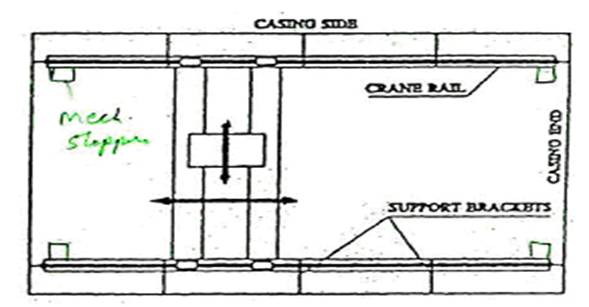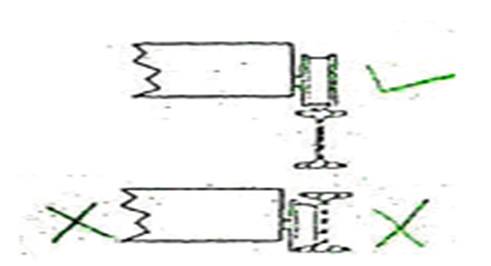Question
(a)
An M. notice draws attention to the need for adequate support, of engine
room gantry cranes.
(i) Sketch sections' through the engine room
casing showing how the crane is supported by the ship structure
(ii).
State what restricts the forward and aft limits of the crane and what is
fitted to prevent the crane damaging the forward and aft bulkheads of the
casing
State the Chief Engineers responsibilities
for the engine room gantry crane as laid down by the Code of Safe Working
Practices for Merchant Seaman.
Answer
A gantry crane is usually fitted in the engine room of
most medium and large size ships to allow for the removal of machinery parts
for inspection, maintenance and repair. Typically an overhead gantry crane of 5
tonne SWL is installed to cover the full width, and
to travel the full length of the casing.
The crane usually runs on rolled steel joist (RSJ)
rails having a rail bar welded on top.
(Earlier types of engine room gantry cranes had 4
tapered wheels that fitted into the inside flanges of the RSJ but a fatal
accident occurred when deflection of the beams was sufficient to cause the
crane to fall into the engine room - see M.588)

The cranes are supported at each end by brackets tying
them to stiffeners at the ends of the. casing, whilst
intermediate brackets extend from the casing side to restrict deflection of the
beams.

(ii) The
limit of forward and aft travel is the end bulkheads of the casing. Stops are
fitted at the ends of each rail track to prevent the crane colliding with the
casing end.
(b) Chapter 17
of the Code of Safe Working Practices for Merchant Seaman covers the
responsibilities of Master and Employer, but the Chief Engineer would have the
initial responsibility for the proper operation, maintenance and documentation
of the crane.
